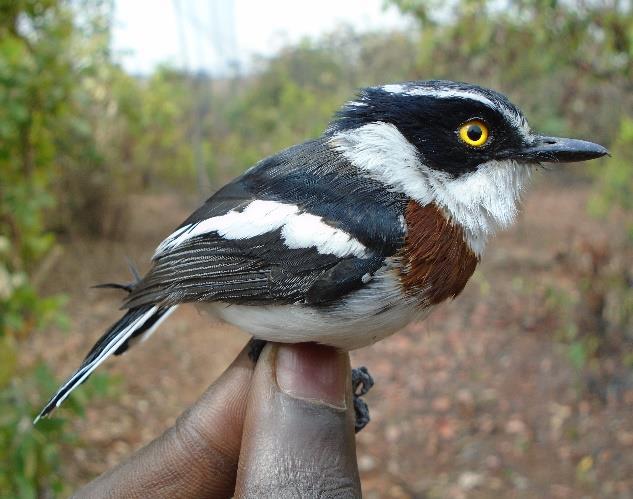Mahamat Sali
The Adamawa plateau harbours an important number of endangered and non-endangered bird species. Previous works revealed that, this area is under deforestation due to increasing pressures from agricultural land through shifting cultivation, fire, tree extraction, livestock pasture and illegal harvesting that influence the distribution and survival of local species. This project has three major goals: 1) Biodiversity inventory of bird’s species in three landscape ecosystems Adamawa Plateau in northern Cameroon, 2) To establish a conservation action plan for some populations of critically endangered birds species encounter in the Adamawa Plateau, 3) To establish a long-term monitoring system in collaboration with local government agencies in charge of nature conservation. Additionally, assessment of habitat preferences and threats for update IUCN Red-List of the avifauna. At the end, community training to build awareness and involve locals in the management of their forest resources is planned as well as Long-term monitoring in the area.

Batis orientalis (Platysteiridae).
The Adamawa Plateau is a central African region that stretches from south-eastern Nigeria through north-central Cameroon to the Central African Republic. The goal of the proposed project is to assess the condition of Adamawa Plateau ecosystems using avifauna populations as indicator species. Our preliminary researches revealed the Adamawa Plateau landscape ecosystems harbour an important number of avifauna species that includes critical endanger and vulnerable species: Ploceus bannermani, Polemaetus bellicosus, Circaetus beaudouini and Trigonoceps occipitalis, Necrosyrtes monachus, Gyps africanus. In addition, our preliminary research and research by Fotso et al. (2001) revealed that the Adamawa plateau ecosystem and avifauna thereto are under threats of deforestation, degradation, pollution etc., by human activities, its vital ecosystem services are in danger of being lost. Indeed, our initial findings indicated that the collected populations of some species of this avifauna might be in serious decline, due to long-term degradation, deforestation, and pollution in this ecosystem. It is therefore necessary to assess the density, abundance, distribution, habitat preferences and threats of the avifauna of this region and to determine the population size of threatened species in the way of developing a conservation action plan.
Fieldwork will consist of 12 days of surveys to capture and visualize every month over 1 year. In all, we will spend 144 days in the field. The fieldwork will take place in 3 target sites, meadow, dry woodland and forest. We will use two aim methods, mist nets for the capture and mix visual and auditive counts. Each site will be visited 4 times every month (3 days to sample and 1 days to make sensitive the population). Analyses will be conducted on measure air temperature and humidity in the three sites and specimens captured will be identified, photographed and released in the nature, except for those that are difficult to identify, and habitat details will be recorded. Tissue of all the specimens will be taken for post study of molecular investigations.
Results will be used for prioritization and management planning being developed in the region by locals and international NGOs. Findings will as well provide the foundation on which to measure the impact of human activities on habitat birds before any target actions can be undertaken. Apart from pursuing a PhD degree at the end of this study, building capacity of locals involved in bird’s ecology is necessary for enhancing present knowledge of avifauna in Cameroon.